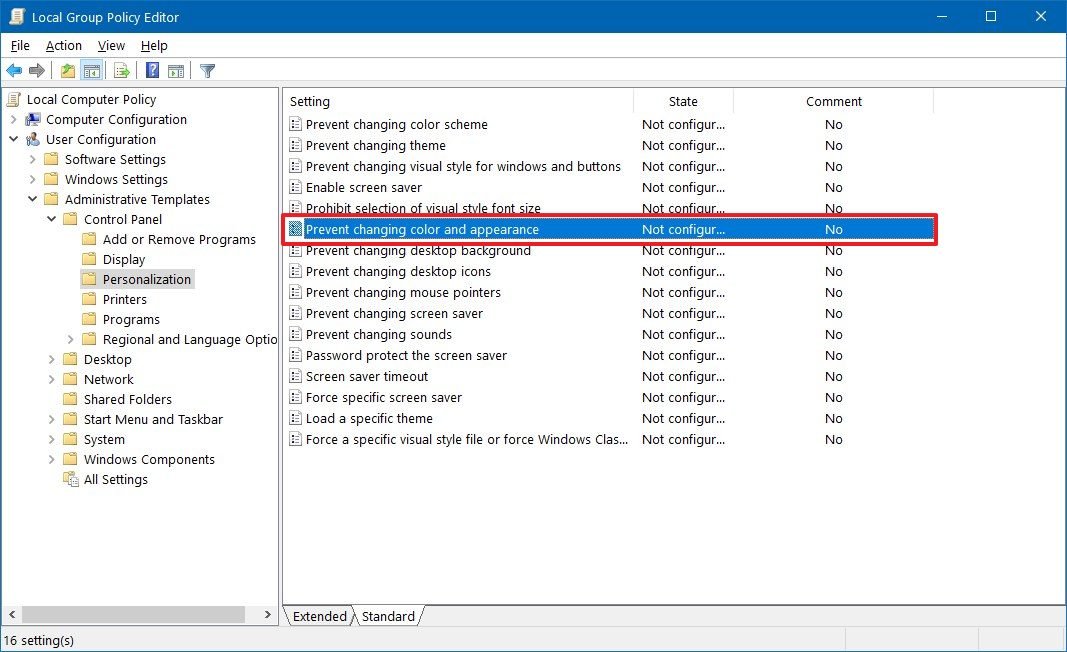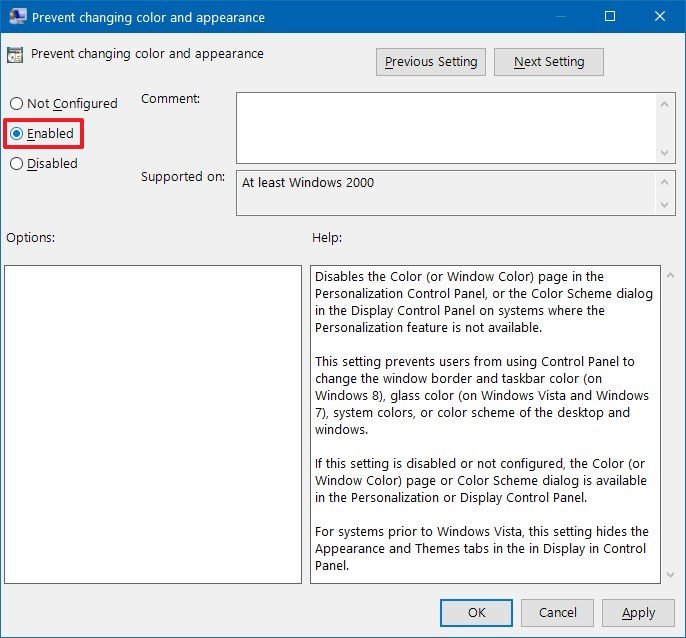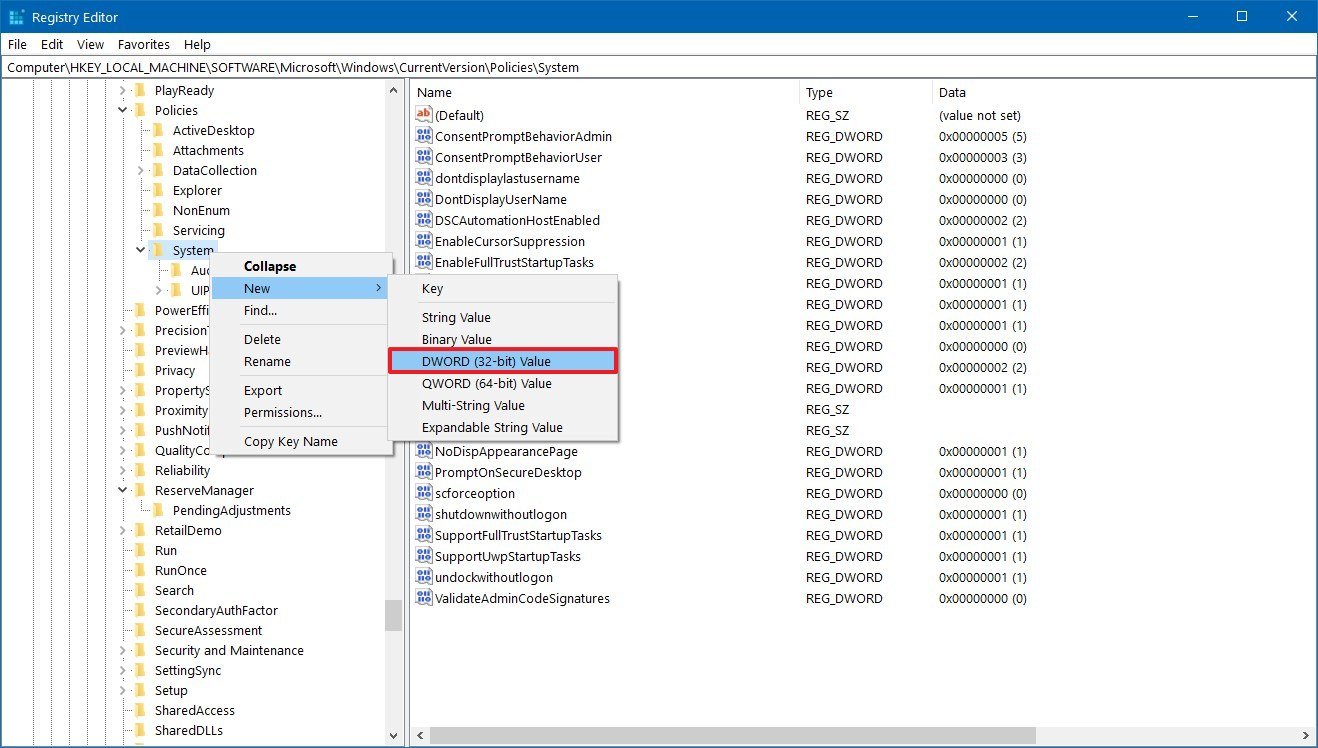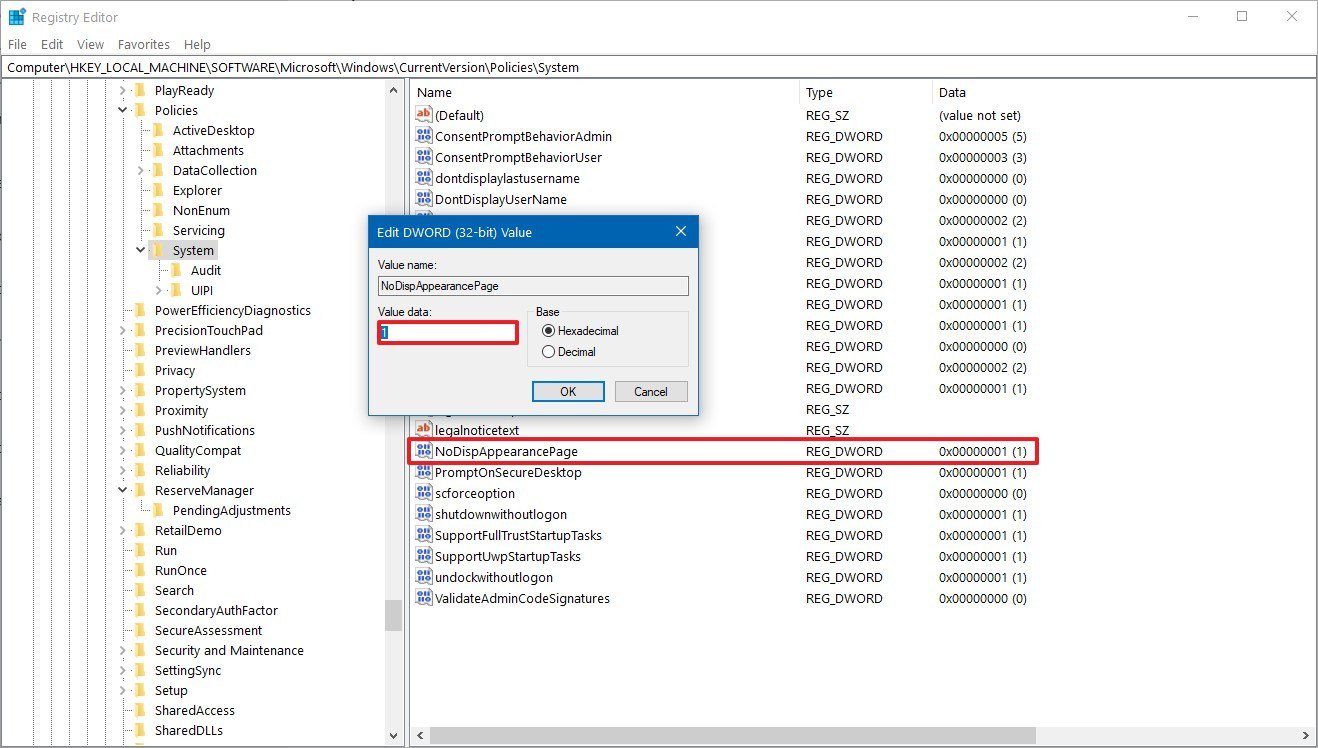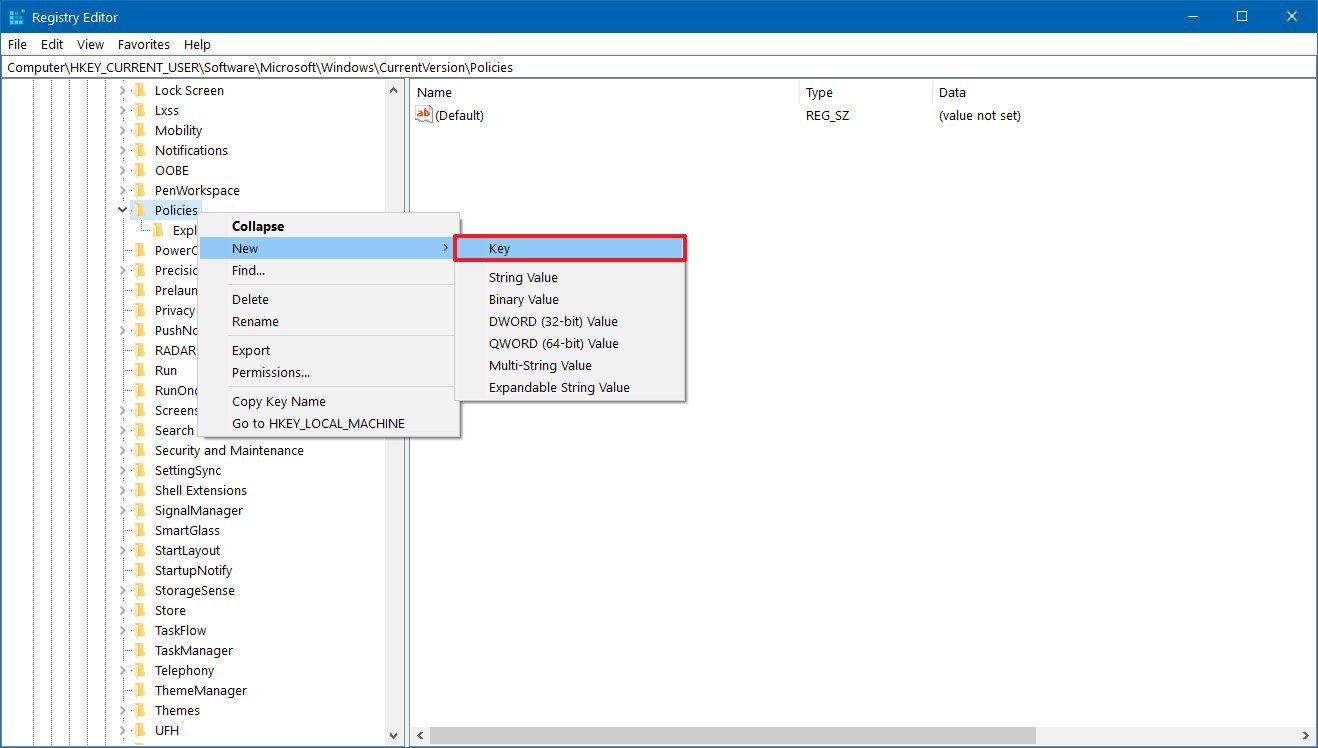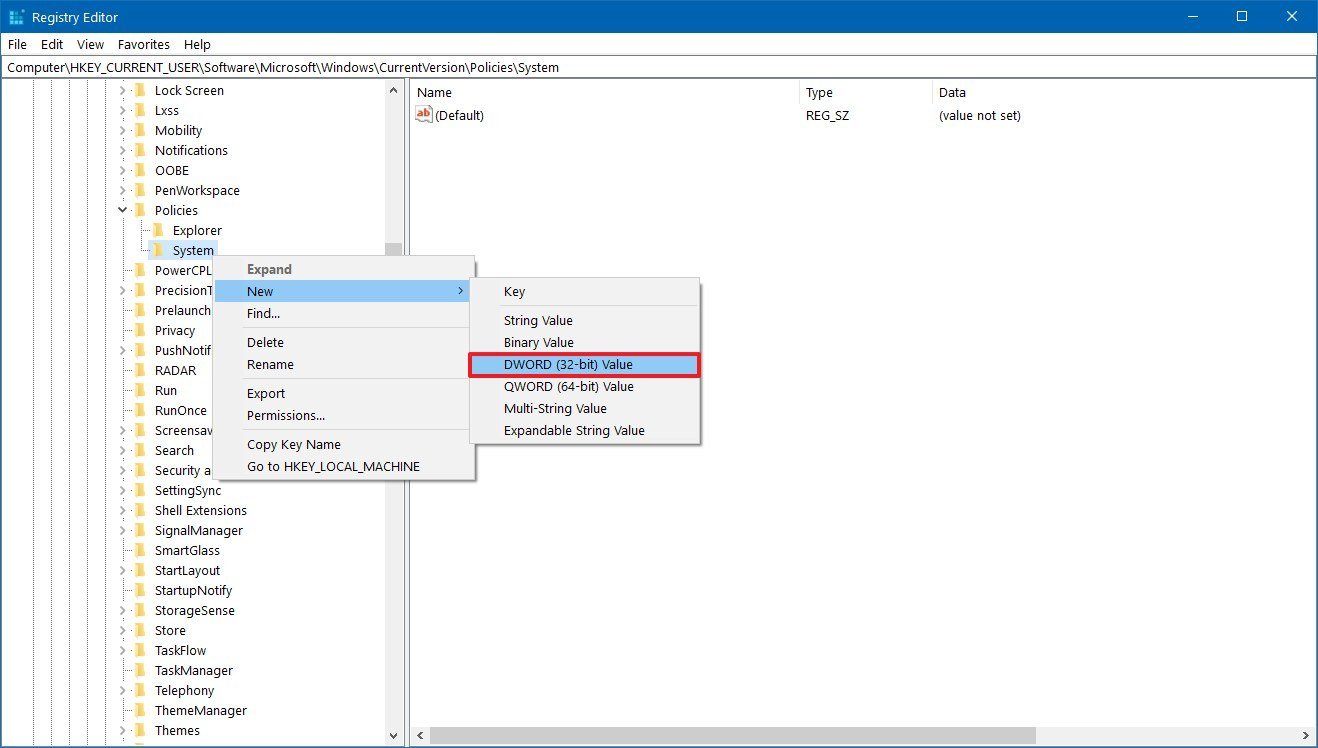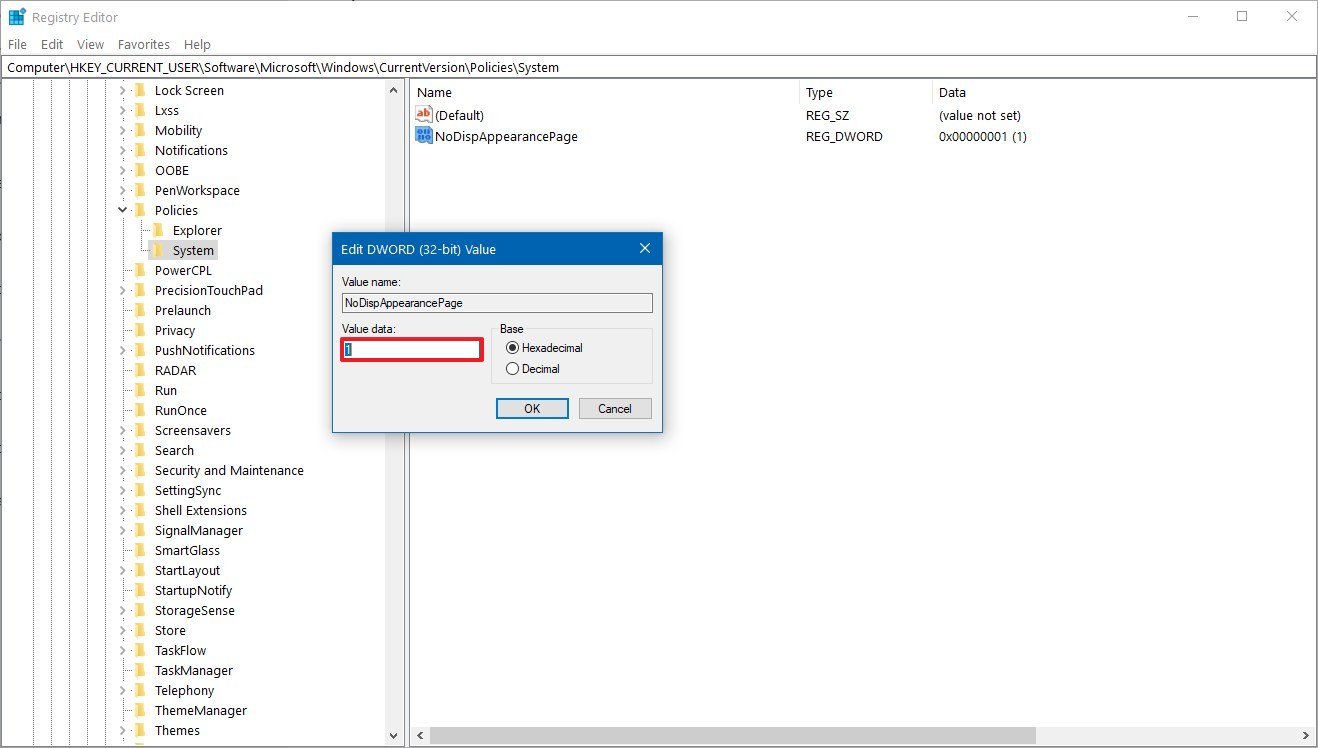How to prevent users from changing system color settings on Windows 10
Yes, you can stop users from making color changes to the desktop on Windows 10, and here are the steps to do it.
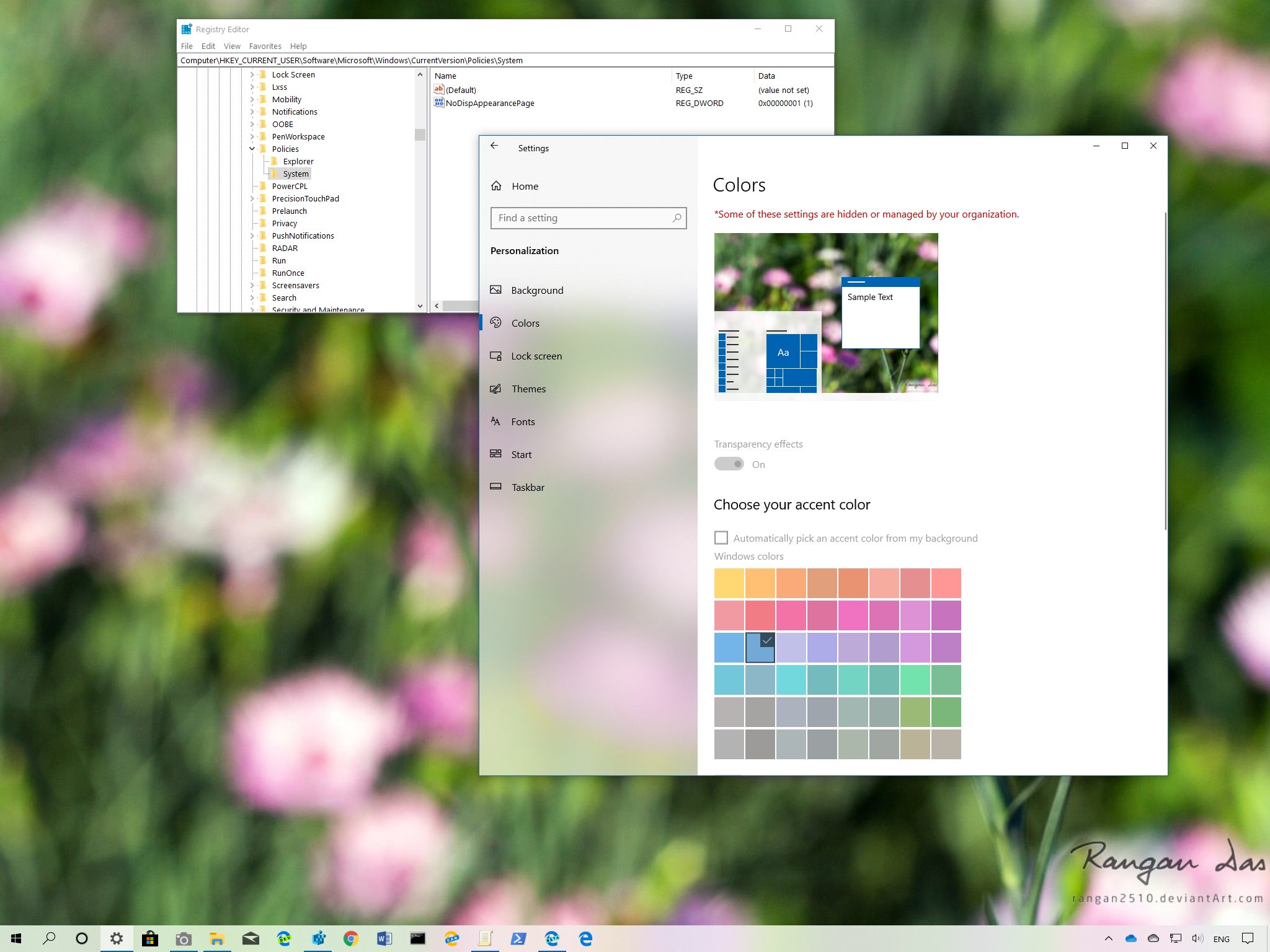
On Windows 10, the Colors settings page allows users to change the system color scheme, show accent color in Start, taskbar, action center, title bars, and borders, as well as disable transparency effects.
Although it's a useful feature to customize the experience, there could be more than one reason to stop users from changing the Colors settings. Perhaps you work on a company that wants to maintain the same look and feel across all devices. Or at home, if you share a computer with other people, and you prefer to use a particular color, and you don't want others to change your customization settings.
Whatever the reason it may be, Windows 10 includes options to prevent users from changing the color appearance of the desktop using Group Policy and the Registry.
In this Windows 10 guide, we'll walk you through the steps to disable the Colors settings to prevent users from changing colors as well as transparency settings on your device.
- How to disable changing Colors settings using Group Policy
- How to disable changing Colors settings using Registry
How to disable changing Colors settings using Group Policy
If you're running Windows 10 Pro (or Enterprise), the easiest way to disable the Colors settings is using the Local Group Policy Editor.
To prevent users from changing the color settings on Windows 10, use these steps:
- Open Start.
- Search for gpedit.msc and click OK to open the Local Group Policy Editor.
- Browse the following path:
User Configuration > Administrative Templates > Control Panel > Personalization - On the right side, double-click the Prevent changing color and appearance policy.
- Select the Enabled option to disable the Colors settings for all users.
- Click Apply.
- Click OK.
Once you complete the steps, users will no longer be able to change the color scheme as well as disable system transparency effects.
All the latest news, reviews, and guides for Windows and Xbox diehards.
In case you change your mind, you can roll back the previous settings using the same instructions, but on step No. 5, select the Not Configured option.
How to disable changing Colors settings using Registry
In case you're running Windows 10 Home, you won't have access to the Local Group Policy Editor. But you can still stop users from making color changes by modifying the Registry.
Warning: This is a friendly reminder that editing the Registry is risky, and it can cause irreversible damage to your installation if you don't do it correctly. It's recommended to make a full backup of your PC before proceeding.
To stop users from changing the Colors settings, use these steps:
- Open Start.
- Search for regedit and click the top result to open the Registry.
- Browse the following path:
HKEY_LOCAL_MACHINE\SOFTWARE\Microsoft\Windows\CurrentVersion\Policies\SystemQuick tip: On Windows 10, you can now copy and paste the path in the Registry's address bar to quickly jump to the key destination. - Right-click the System (folder) key, select New, and click on DWORD (32-bit) Value.
- Name the key NoDispAppearancePage and press Enter.
- Double-click the newly created DWORD and set the value from 0 to 1 to disable the Colors settings for all users.
- Click OK.
- (Optional) Browse the following path:
HKEY_CURRENT_USER\Software\Microsoft\Windows\CurrentVersion\Policies - Right-click the Policies (folder) key, select New, and click on Key.
- Name the key System and press Enter.
- Right-click the newly created key, select New, and click on DWORD (32-bit) Value.
- Name the key NoDispAppearancePage and press Enter.
- Double-click the newly created DWORD and set the value from 0 to 1 to disable the Colors settings for the current user.
- Click the OK button.
After you complete the steps, users will no longer be able to customize the colors settings until you undo the block.
You can always revert the changes by using the same instructions, but on step No. 4, make sure to right-click the System key and select the Delete option. And on step No. 14, right-click and delete the NoDispAppearancePage key.
If you're also looking to prevent users from changing the desktop wallpaper, you can follow these instructions.

Mauro Huculak has been a Windows How-To Expert contributor for WindowsCentral.com for nearly a decade and has over 22 years of combined experience in IT and technical writing. He holds various professional certifications from Microsoft, Cisco, VMware, and CompTIA and has been recognized as a Microsoft MVP for many years.
